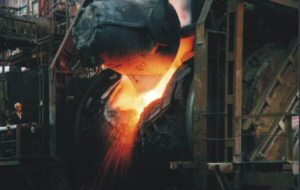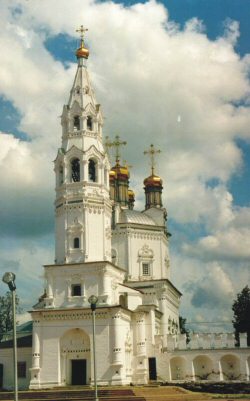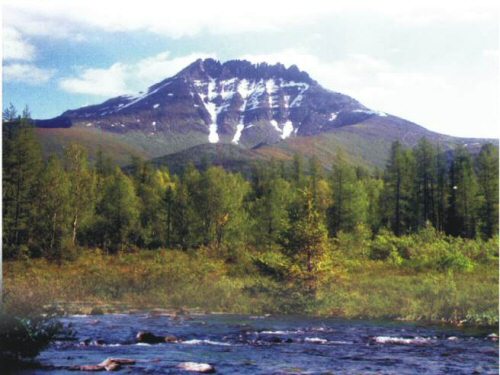|
|
| 15.03.2006 General description of Sverdlovsk region |
Geography
 Sverdlovsk region is situated at the boarder of Europe and Asia, at the junction of two large physical-geographical complexes. Its area is 194,8 thousand sq. km (1,1% of the Russian Federation area, that is 20th place in RF). The western part of the region lies mainly on the eastern slopes of the low Ural Mountains, their heights range from 700-800 up to 1569 m (Konzhakovsky Kamen mountain). Extreme southwest of the region is situated on the hilly Foreurals, and the eastern part of the region borders with West-Siberian Plain.
Sverdlovsk region is situated at the boarder of Europe and Asia, at the junction of two large physical-geographical complexes. Its area is 194,8 thousand sq. km (1,1% of the Russian Federation area, that is 20th place in RF). The western part of the region lies mainly on the eastern slopes of the low Ural Mountains, their heights range from 700-800 up to 1569 m (Konzhakovsky Kamen mountain). Extreme southwest of the region is situated on the hilly Foreurals, and the eastern part of the region borders with West-Siberian Plain.
The region is mainly covered with taiga. In the mountain part of the area prevail coniferous trees and the plain is mostly covered with pine forests with birch and aspen forests and forest-steppes in the south. The soils of the region are typical for forest and forest-steppe zones. The southern part of the region is well-developed, while the northern part is poorly populated and barely changed. The biggest rivers of the region are Tura, Tchusovaya, Sosva, Iset. Forests and numerous water sources create favorable conditions for development of tourism. Furthermore, national parks Pripyshminskiye Bory, reserves Visimsky and Denezhkin Kamen' are situated on the territory of the region. More than 1900 different kinds of plants grow within the bounds of the region and nearly 212 species of various animals and birds could be found here.
The center of Sverdlovsk Region is Ekaterinburg that is 1667 km far from Moscow.
Climate
Sverdlovsk region is situated in temperate climate zone. The region's climate is continental. Average temperature in January is -13,5°Ñ below zero. Average temperature in July is +20,9°Ñ. Annual amount of precipitation is 500 mm.
Population
The region' population consists of nearly 90 nationalities. The majority of the population are Russians (88,7%). There are also Tatars (3,9%), Ukrainians (1,8%), Bashkirs (0,9%), Germans (0,7%), Mari (0,7%), Byelorussians (0,6%), Udmurts (0,5%), Chuvashes (0,3%), the Mordvinians (0,3%) etc. The density of the regional population is 23 person per 1 sq. km. The total population amounts to 4 489,8 thousand (that is 3,1% of Russian Federation and the fifth place in RF).
Industry
 Rich and various natural resources served as a base for constructing on the region territory a powerful and diversified industrial production. Huge metallurgical and mechanical engineering works, scientific-technical institutes, laboratories and pilot-design offices are concentrated here. The industrial potential of the region holds one of the leading places among all Russian regions.
Undoubtedly, metallurgical complex is playing the leading part in the industrial development of the region. By the end of 2004 the metallurgical complex of Sverdlovsk region counted 72 large and medium enterprises, including 34 enterprises of ferrous metallurgy and 38 - of non-ferrous one.
Rich and various natural resources served as a base for constructing on the region territory a powerful and diversified industrial production. Huge metallurgical and mechanical engineering works, scientific-technical institutes, laboratories and pilot-design offices are concentrated here. The industrial potential of the region holds one of the leading places among all Russian regions.
Undoubtedly, metallurgical complex is playing the leading part in the industrial development of the region. By the end of 2004 the metallurgical complex of Sverdlovsk region counted 72 large and medium enterprises, including 34 enterprises of ferrous metallurgy and 38 - of non-ferrous one.
Mechanical engineering of the Middle Ural is a base for development of the powerful Ural regional production system. Chemical industry complex is represented in Sverdlovsk region by chemical, petrochemical, medical and microbiological branches of industries.
Plants of military-industrial establishment constitute the most perspective branches of domestic industry - aircraft construction and rocket production, nuclear-power engineering, metallurgy and special chemistry, radio industry and instrument making. International exhibition of armament and defense technology RUSSIAN EXPO ARMS facilitates to extend the number of military-industrial establishment plants trade partners.
Transportation and communication
The main strategic direction of international transit traffic development is the extension of the corridor from European countries via Trans-Siberian Railway to Far East and states of South-East Asia, China and Japan. The shortest railway routs to the countries of Central Asia go exactly through Yekaterinburg that will undoubtedly increase international transit cargo traffic.
Today Sverdlovsk railway, route miles of which within the boundaries of Sverdlovsk region amount to 3 347 km, is one of three largest Russian railways concerning freight turnover and passenger traffic.
Sverdlovsk region has one of the most updated systems of telecommunication in Russian Federation. Ekaterinburg has Russia biggest long-distance exchange and facilities for international telephone and telegraphic communication with digital linear routs of optical fiber lines that come from Trans-Siberian line Moscow-Khabarovsk.
 Science, technologies, innovations
Science, technologies, innovations
Sverdlovsk Region is one of the largest scientific centers in Russian Federation. The scientific staff of Sverdlovsk Region is represented in the following way: 12 academicians of Russian Academy of Sciences, 31 Correspondent Members of Russian Academy of Sciences, about 1.000 Doctors of Sciences and more than 5.000 of Masters of Sciences. There are more than 30 higher educational institutions in Sverdlovsk Region.
The scientific activity of Sverdlovsk region is presented by Ural Branch of Russian Academy of Sciences. It is a multi-activity research complex, incorporating 22 scientific institutions that won all-Russian and international recognition.
Culture
Sverdlovsk Region has a rich history of culture and art. Today Sverdlovsk region organically enters the world cultural space due to the development of arts, theatre, architecture, music, literature and national art crafts.
The center of tourism and cultural heritages of Sverdlovsk region Verhotourie is an architectural pearl of the Ural. The city was founded in 1598 by the blessing of Tzar Fedor Ioannovich. Today the Preobrazhenski Temple was revived in the former capital of Urals, as well as superior's, brotherly and guests' houses and icon-bookstore, workshops. In 1991 the Pokrovskiy Nunnery and Novo-Pokrovskaya Church were restored. The Governor of the Sverdlovsk region Mr. Edward Rossel personally rendered huge support to the restoration of memorials of Verhotourie and transformation of the city into cultural center of the Middle Urals.
 Sport
Sport
Sverdlovsk region plays a great role in Russian sport life. The most important thing that proves high level of physical culture and sport development is the fact that since 1952 the athletes of Sverdlovsk region have participated in all summer and winter Olympic Games. Also, good achievements of our athletes in many Russian National and International tournaments are the evidence of high development of all kinds of sports.
The sports facilities of Sverdlovsk region comprise 94 stadiums, 1581 gyms, 106 swimming pools, 166 skiing resorts, 266 shooting galleries, and 9 artificial ice sports arenas.
Tourism
There are more than 250 traveling agencies sharing tourism market of Sverdlovsk region. Every year this number is increasing due to Moscow operators who have forced their way to Sverdlovsk region.
Domestic and foreign tourism are the most promising trend of Sverdlovsk region traveling agencies activity. Favorable geographical location of Sverdlovsk region at the boarder-line between Europe and Asia contributes to the development of tourist industry. On the territory of the city one can find all architectural styles pertaining to XVIII-XIX centuries. Foreign specialists particularly take interest in architectural models of constructivism. Temple-on-Blood, Ganina Yama - the place of the last Russian Emperor assassination and burial are important historical points of interest in Sverdlovsk region. Temple complex in Verhotourie is one of the most popular directions of tourist trips.
According to Russian Ministry of Culture information center Sverdlovsk region museums hold the third place in Russian federation after Moscow and Saint Petersburg in respect of quantity, funds, number of exhibitions and visitors. The most important museums are located in Ekaterinburg.
|
WWCC 2006 |
|









|



